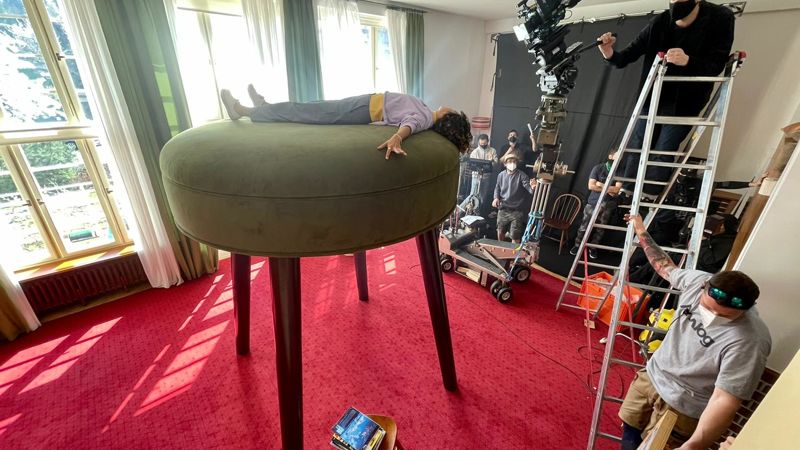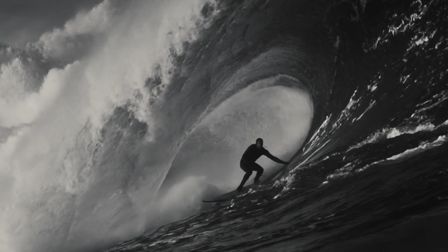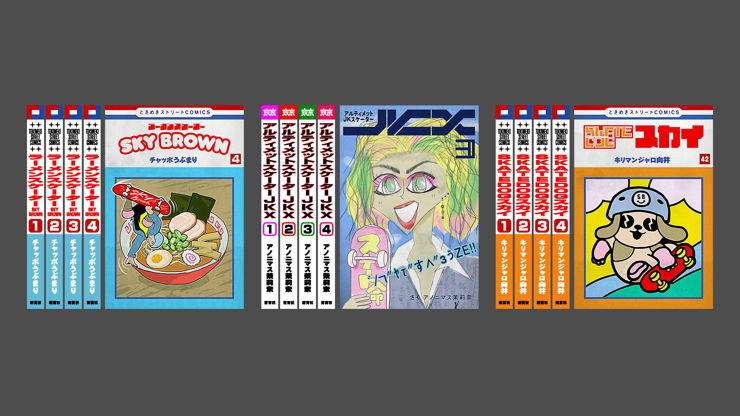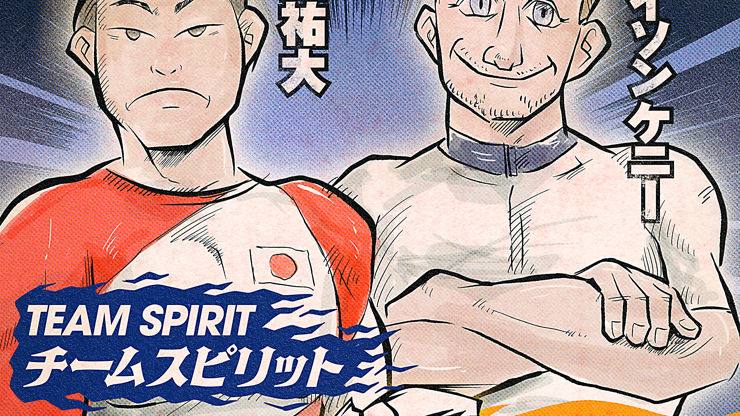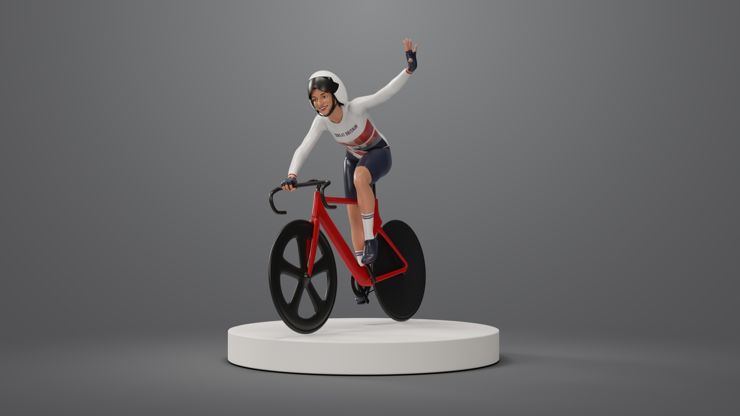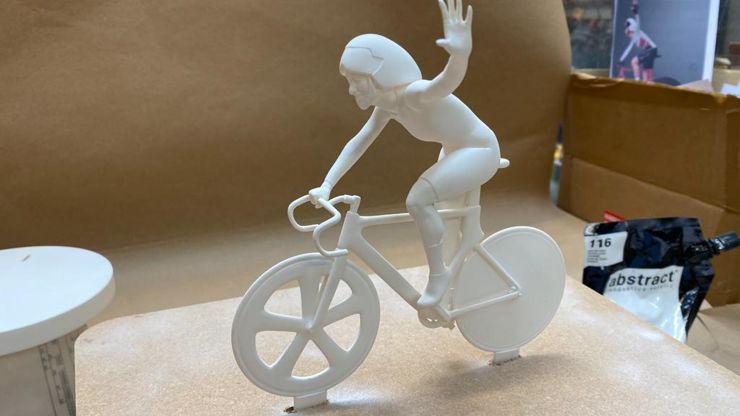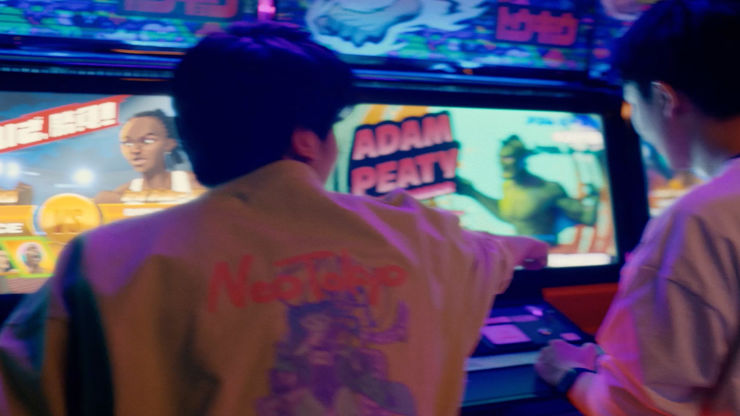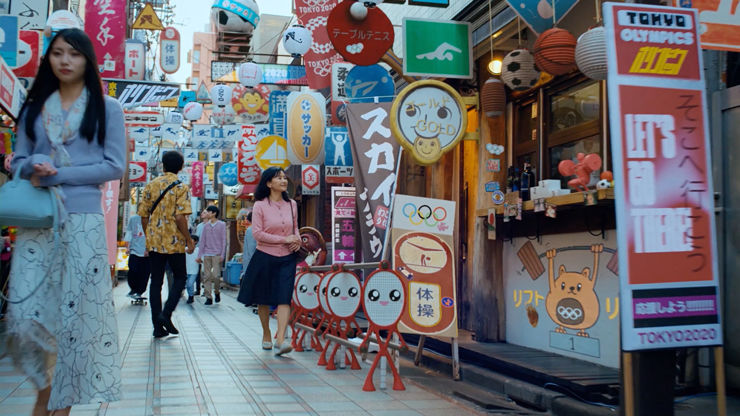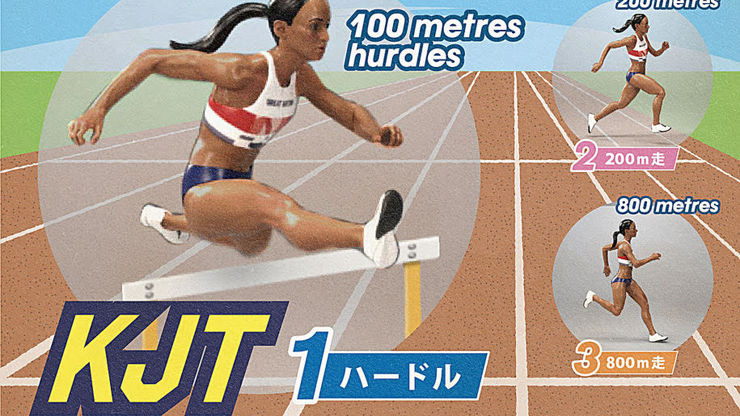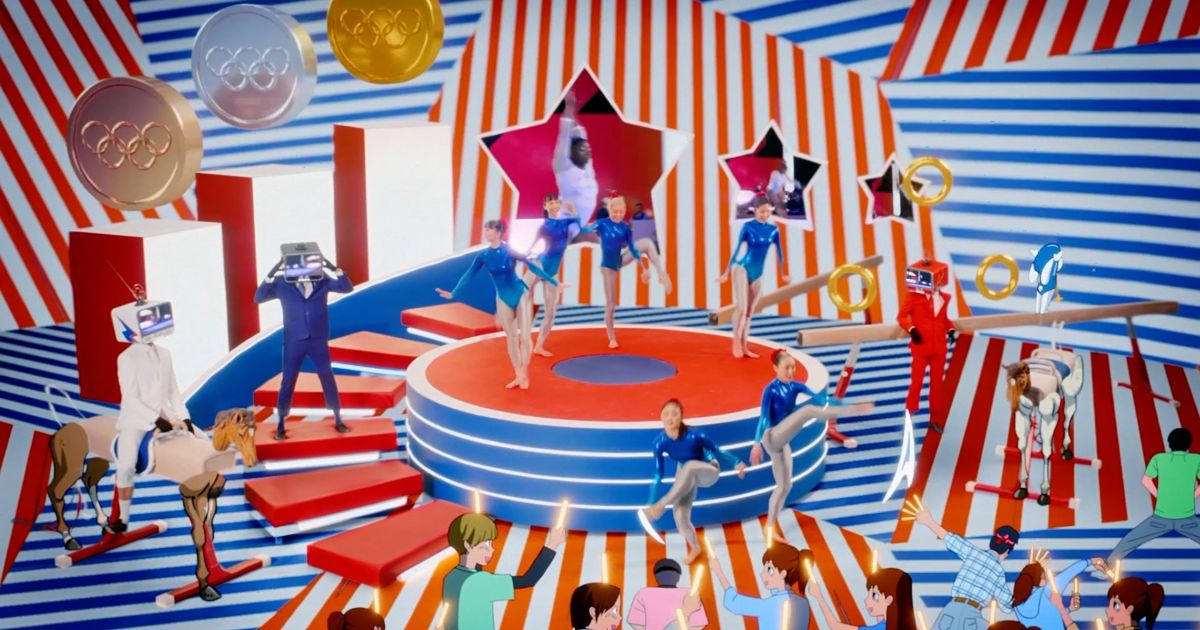How Factory Fifteen filled Tokyo with easter eggs
The Nexus collective, made up of Kibwe Tavares, Jonathan Gales and Paul Nichols, tell us how pre- and post-Covid planning, animation, VFX and shoots 1000 miles apart combined to create a disorientating journey through an Olympics-themed Tokyo.
With Wimbledon almost over and football heading stoically towards home in the Euros, all eyes are now pointing eastwards for the start of The Olympics.
Teasing the BBC's coverage is a wild and content-packed film from Nexus Studios collective Factory Fifteen (Kibwe Tavares, Jonathan Gales and Paul Nichols), delightfully flitting between animation, live-action and VFX to create a dazzling and disorientating trip.
We spoke to F15 about the creation of the piece, from BBC Creative concept to whirling output, and asked how combining the sporty and kawaii was an education in authenticity.
All answers credited to Factory Fifteen as a collective unless otherwise stated.
Credits
View on- Agency BBC Creative/London
- Production Company Nexus Studios/UK
- Director Factory Fifteen
-
-
Unlock full credits and more with a shots membership
Credits
View on- Agency BBC Creative/London
- Production Company Nexus Studios/UK
- Director Factory Fifteen
- Sound Designer Mark Hills
- VFX The Mill/London
- Executive Producer Gemma Humphries
- Creative Director Fantasista Utamaro
- Executive Producer Mike Bell
- Executive Producer Judy Hill
- Senior Producer Isobel Conroy
- Shoot Producer Alan Traquair
- DP London Tony Miller / (DP)
- Production Designer London Sean Hogan
- J-Pop Sequence: Studio 2D Lead Dylan White
- Editor David Slade / (Editor)
- VFX Supervisor Fergal Hendrick
- Producer Elle Lockhart
- Producer Kirsty Ratcliffe
- Shoot Supervisor Fergal Hendrick
- Shoot Supervisor Ben Blundell
- Colorist Alex Gregory
- Producer Elle Lockhart
- Creative Rachel Miles
- Creative Director James Cross
- Executive Creative Director Helen Rhodes
- Head of Planning Mike Lean
- Head of Production James Wood
- Picture Sam Ratcliffe
- Producer Sarah Bradbury
Explore full credits, grab hi-res stills and more on shots Vault

Credits
powered by- Agency BBC Creative/London
- Production Company Nexus Studios/UK
- Director Factory Fifteen
- Sound Designer Mark Hills
- VFX The Mill/London
- Executive Producer Gemma Humphries
- Creative Director Fantasista Utamaro
- Executive Producer Mike Bell
- Executive Producer Judy Hill
- Senior Producer Isobel Conroy
- Shoot Producer Alan Traquair
- DP London Tony Miller / (DP)
- Production Designer London Sean Hogan
- J-Pop Sequence: Studio 2D Lead Dylan White
- Editor David Slade / (Editor)
- VFX Supervisor Fergal Hendrick
- Producer Elle Lockhart
- Producer Kirsty Ratcliffe
- Shoot Supervisor Fergal Hendrick
- Shoot Supervisor Ben Blundell
- Colorist Alex Gregory
- Producer Elle Lockhart
- Creative Rachel Miles
- Creative Director James Cross
- Executive Creative Director Helen Rhodes
- Head of Planning Mike Lean
- Head of Production James Wood
- Picture Sam Ratcliffe
- Producer Sarah Bradbury
How did you get involved in the project? When did your prep start?
We started working on it from Jan 2020 just after finishing our Ballet ‘Aisha & Abhaya’ with the Royal Opera House and Rambert. There was a lot of complexity in the idea from BBC Creative, which needed a multitude of techniques to realise it, so a lot of the early prep stages were focused on methodology and approach.
There was a lot of complexity in the idea from BBC Creative.
The timeline was also aggressive and soon after being all steam ahead in previs, it was put on hold due to Covid-19.
What was on the page from BBC Creative initially? What element sparked your interest?
It was a really exciting brief that described a dynamic but overwhelming and disorientating journey through an Olympics-themed Tokyo.
We really sparked on the idea of creating it through a continuous single camera shot and quickly saw the amazing visual potential of what could be created.
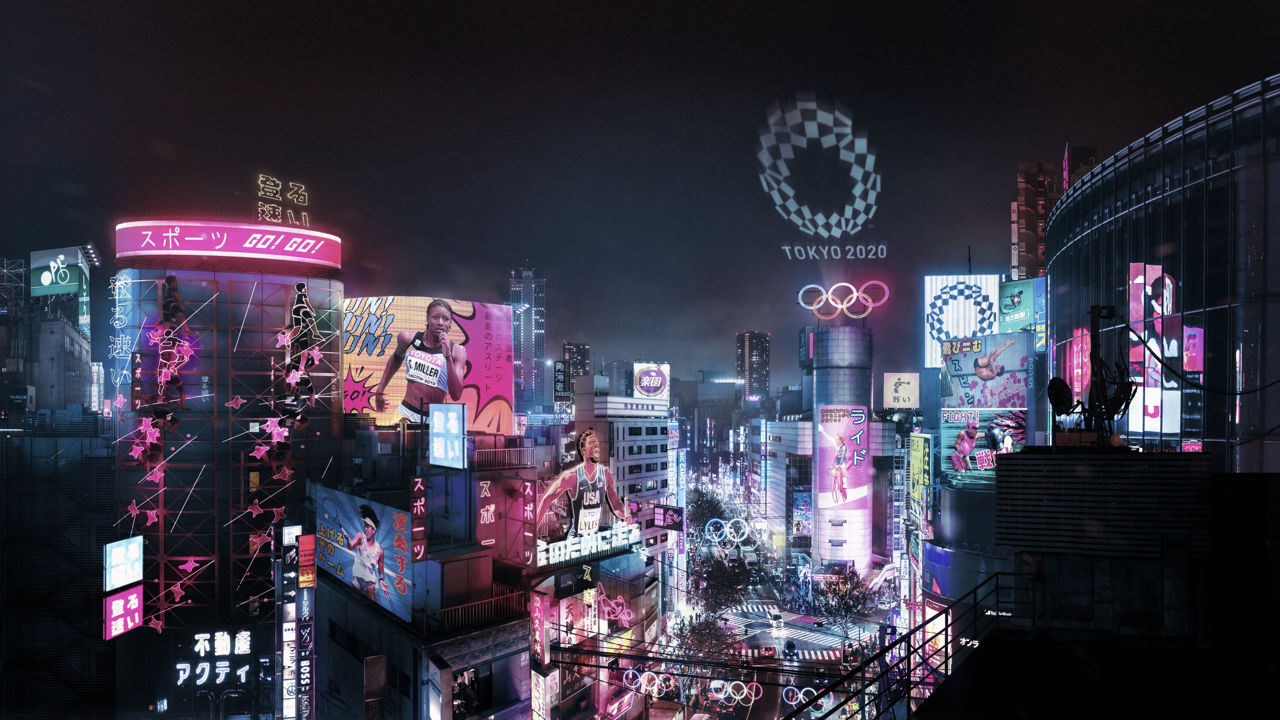
Above: Pre-vis concept artwork for the project.
What were the early stages? What was the most important thing to crack?
The original deck was packed full of ideas, elements and spaces to explore; there was almost too much in it, so the first thing to crack was streamlining some of those ideas to create a flow. It became quite obvious that the transitions would be key and we were invested in figuring out how we could seamlessly go from one scene to another.
We also had to crack our methodology as we wanted to use a variety of filmmaking techniques. We decided on building a very accurate previs first, which is an animated storyboard, and used that as our guiding light. Then we worked on defining whether each scene would be a live-action shot with VFX, a studio shoot with animated elements or a fully animated scene.
How was the shoot? The film contains many disparate elements stitched together into a seamless single take. What needed to be in place for that to be achieved?
We wanted to feel the presence of the camera searching and curious, excited and hopeful as it leads us hungrily into the world of the next-gen Tokyo and the new stars of the Olympics. This forward-moving camera, stitching together a series of dazzlingly detailed environments, became the driving factor of our evolved approach.
It became quite obvious that the transitions would be key and we were invested in figuring out how we could seamlessly go from one scene to another.
We needed a unified understanding from everyone what the camera was doing across the scenes, when we exit the streets and into the j-pop scene the camera needs to feel consistent.
In reality, we filmed those two shots 1000’s of miles apart and with different camera crews, so the previs became critical early on and something to reference continually on the shoot.
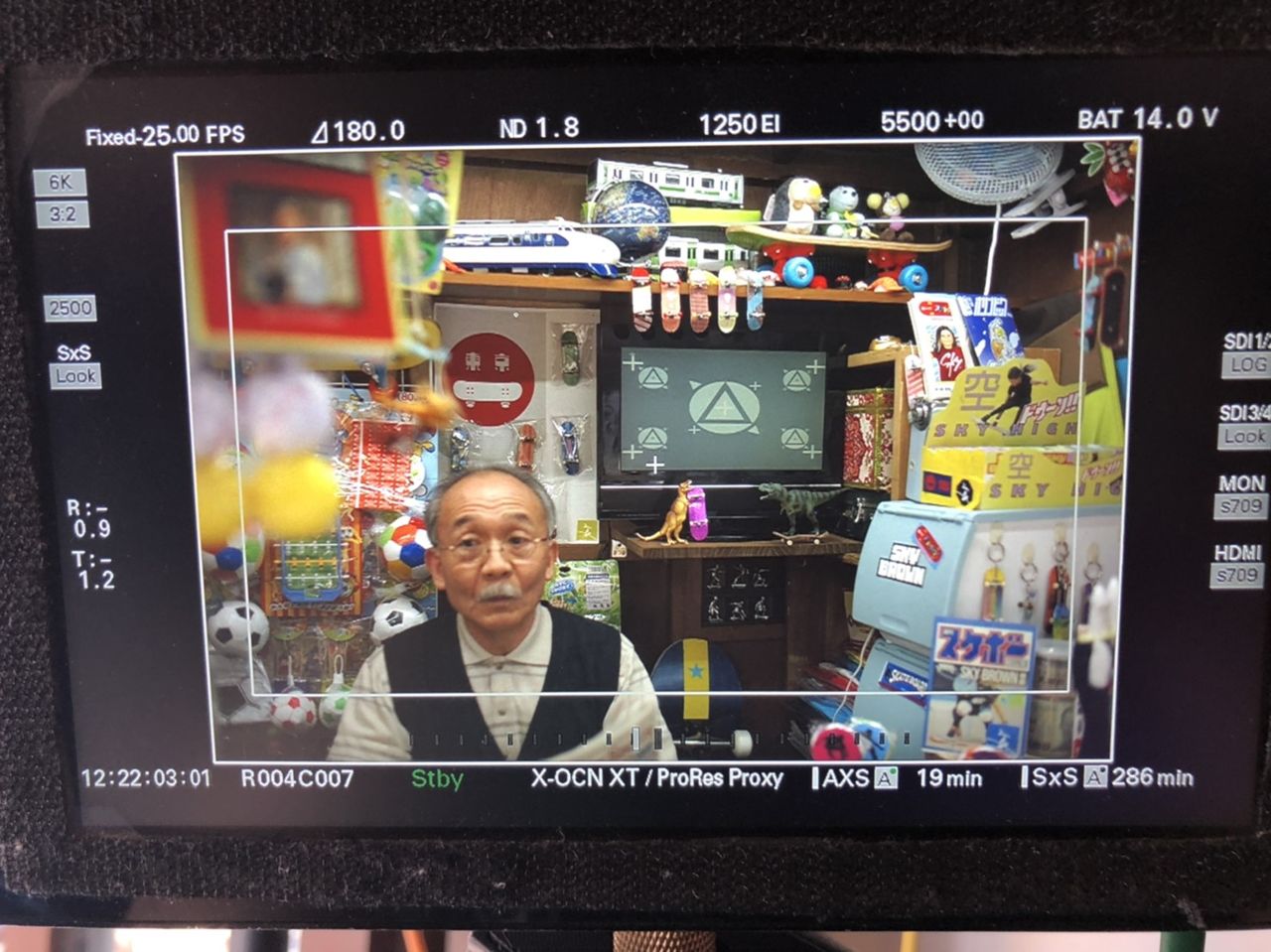
Above: The shoot saw elements directed remotely.
Did you encounter any unexpected issues (apart from, you know, Covid and the like)?
The pandemic was an obvious challenge. The project was supposed to be made by Summer 2020 and we built momentum to achieve that with the whole team. Then everything got put on hold for the better part of the year, and we thought that was that. We got the call in January 2021 that things might be kicking off again so we jumped on it and did as much prep as we could before we even got confirmation.
We were working for quite some time before we knew the Olympics were (hopefully still) confirmed to go ahead. We didn't actually get to go out there which was a challenge, as it meant directing the camera, production crews and designers remotely, but it all worked surprisingly well with a live feed to the camera and a zoom link to the crew.
You collaborated with Fantasista Utamaro for certain elements. Can you tell us a little about his input and why it was important?
Capturing Japanese culture and sensibilities in an authentic way was very important to everyone involved. Our work has always been influenced by Japanese art and culture, but we were conscious of the fact that we’re still Directors from the UK and really wanted guidance from a culturally authentic voice.
Uta is part of a new generation of Japanese artists who are challenging and subverting the traditional boundaries of art and quickly felt like a perfect fit for the task.
Partnering with fellow Nexus Studios Director Fantasista ‘Uta’ Utamaro on the art direction was key. Uta is part of a new generation of Japanese artists who are challenging and subverting the traditional boundaries of art and quickly felt like a perfect fit for the task.
In practice, the dynamics and creative collaboration was amazing. We would propose a brief on what we wanted; 1964 Olympic pictograms designed into ‘old Tokyo’ signs for the street scene. He’d come back with things like a medal eating a medal with some quirky translation in Japanese and bring something so unique to it. Something that we just wouldn’t have made without him.
Huge shout out to him!
Above: Examples of the amazing production designs for the project.
What were the key elements of the post process? How were they achieved?
We’re trained in VFX and often do our own post, but on this one we had the backing of The Mill which allowed us to focus wholeheartedly on the creative, being the previs, design and assembly, and transitions.
The previs (prior to the shoot) gave everyone a crucial understanding of the flow and speed and exact move we wanted, making the actual shoot formulaic.
We’re trained in VFX and often do our own post, but on this one we had the backing of The Mill.
The design was something we heavily engage with naturally and it was awesome coming up with ideas and dressing the scenes with easter eggs in post with all the content everyone had come up with.
The transitions were a very iterative process to get the right flow, focus of content within the 60, something The Mill nailed.
How did Kenji Kawai get involved? Were you fans of his work beforehand?
He was on the BBC’s list. We’re big anime fans and have been huge fans of his work in films and games for years so it was awesome that they managed to snag him for this! Ghost In The Shell has such an iconic soundtrack and we really wanted to achieve a similar theme song in the opening few seconds of our project.
Kawai blended old Japanese singing styles with the voice from AI singer star Hatsune Miku here, and achieved something totally unique.
It's pretty nuts to see how much Miku’s involvement is trending on social media.
Above: Some of the film's Easter Eggs.
The film is packed full of Easter Eggs. Can you let us in on a couple of your favourites?
Jonathan ‘Jono’ Gales: There really are so many to choose from. One of my favourites is the second arcade game screen which features an amphibious Adam Peaty as a Fish Warrior Game.
One for the cycling nerds; the screen in the boys apartment features a cycling computer training game. We created a 3D animated sequence of a Japanese Keirin race in an outdoor concrete velodrome.
It's pretty nuts to see how much Miku’s involvement is trending on social media.
Paul Nichols: I’m an ex-county table tennis player, something my wife likes me to forget, I once played the national Chinese under 12 champion (and lost lol) so I love the table tennis reference in the opening scene (big paddle) and I also love the gashapon graphics Uta designed based on a few ideas we had, you need to pause frame by frame to see them all.
Credits
View on- Director Factory Fifteen
Explore full credits, grab hi-res stills and more on shots Vault
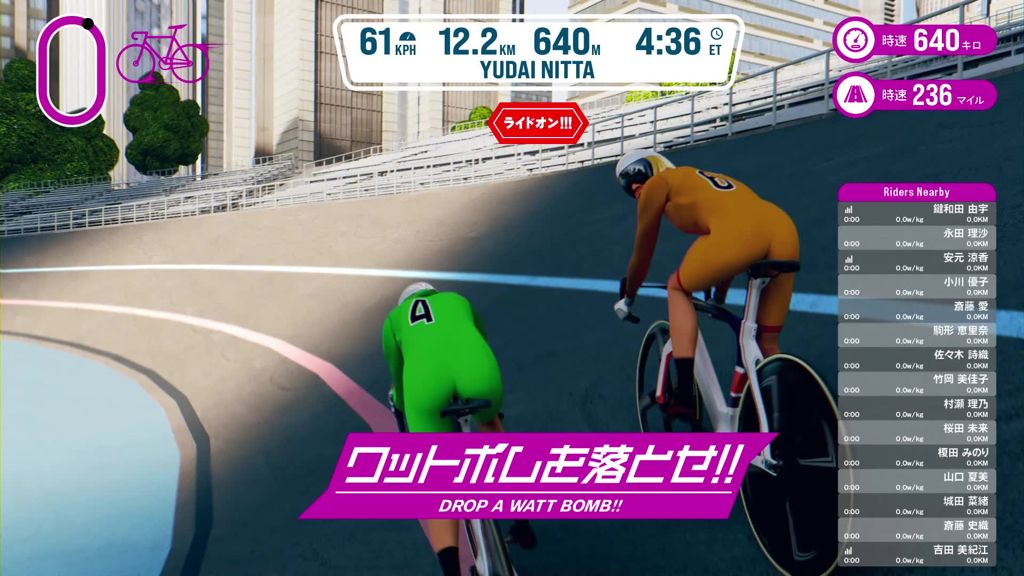
Credits
powered by- Director Factory Fifteen
Above: The cycling computer training game created for the film.
Have you been to Tokyo? What's the best thing you experienced?
JG: Yes, it’s an incredible place! We shot a short film in Tokyo a few years ago looking at subcultures in the city. I got to go to some pretty cool punk gigs and also Japanese dancehall dance-offs, which was a lot of fun!
PN: I went to a restaurant once in Tokyo and it looked really familiar. Not until we had finished did I realise it was in Kill Bill I - where The Bride (Uma Thurman) fights O Ren Ishii (Lucy Liu). It was a magical moment. The sky high all you can eat and drink karaoke bars are also amazing as are the train side sake bars. Too many to mention we’d be here for hours.
I went to a restaurant once in Tokyo and it looked really familiar. Not until we had finished did I realise it was in Kill Bill.
Kibwe Tavares: I’ve been massively influenced by Japanese art and culture in my work. I’ve been to Tokyo a number of times, firstly my brother (scientist) and cousin (an illustrator) were living there and managed to visit and be exposed to a lot of interesting spaces around Tokyo and the rest of Japan - I enjoyed getting lost in the sheer scale of the city and how bricolage and stacked the architecture is.
We also got to go back and film a short branded content piece exploring various music subcultures in Tokyo, which was awesome.
What's up next for you?
Kibwe is working on his first feature and we are helping define the look and design of these worlds together. We’re developing a few immersive and interactive projects in the UK and Hong Kong. We want to continue to work on aspiring advertising projects within a variety of media with a focus on design, while also developing original content for our own studio.
)

